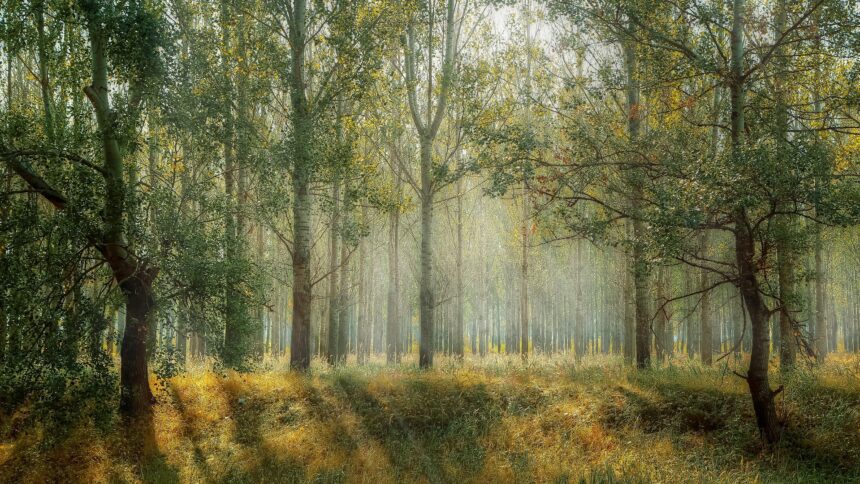Image by Valentin from Pixabay
Forests are an integral part of our planet’s ecosystem. They cover a significant portion of the Earth’s land area, provide habitat for countless species, and play a crucial role in regulating our climate. Here’s an in-depth exploration of the fascinating world of forests.
Introduction
Forests are far more than just a collection of trees. They are complex ecosystems teeming with life, from the towering canopies down to the microscopic organisms in the soil. They are the lungs of our planet, absorbing carbon dioxide and releasing oxygen, playing a crucial role in maintaining the Earth’s atmosphere and climate.
The Significance of Forests
Forests cover about 31% of the Earth’s land area. From the dense tropical rainforests near the equator to the vast boreal forests in the northern hemisphere, these ecosystems are critical for the survival of countless species, including humans.
Climate Regulation
Forests play a crucial role in regulating the Earth’s climate. They absorb carbon dioxide, a greenhouse gas, from the atmosphere and store it in their biomass. This process, known as carbon sequestration, helps mitigate the effects of climate change. A single large tree can capture and filter up to 36,500 gallons of water per year, contributing significantly to the water cycle.
Biodiversity Hotspots
Forests are biodiversity hotspots, home to over 80% of terrestrial species. From the smallest insects to the largest mammals, forests provide habitats for a vast array of life forms. Each forest type, from tropical rainforests to temperate deciduous forests, hosts a unique assembly of flora and fauna.
Human Livelihoods
Forests also support human livelihoods. Approximately one in four people worldwide rely on forests for their survival, providing food, fuel, medicine, and other resources. Forests also provide essential ecosystem services, such as soil conservation, water purification, and climate regulation.
Forest Types
Forests are classified into several types, primarily based on their geographical location and the kinds of trees they host.
Taiga Forests
Taiga, or boreal forests, are the world’s largest land biome, spanning across North America, Europe, and Asia. These forests are dominated by coniferous trees such as pines, spruces, and larches. Taiga forests endure long, harsh winters and have a short growing season.
Temperate Forests
Temperate forests, found in middle latitudes with moderate climate conditions, are a mix of deciduous and coniferous trees. These forests experience four distinct seasons and receive adequate rainfall throughout the year.
Tropical Forests
Tropical forests, located near the equator, are characterized by high temperatures and rainfall. They harbor the greatest biodiversity on Earth, with countless species of plants, animals, and insects.
Forest Flora and Fauna
The flora and fauna of a forest depend largely on its type and geographical location.
Forest Flora
The flora in a forest ranges from towering trees to tiny mosses. Forests are primarily classified based on the dominant type of tree present. For instance, coniferous forests are dominated by cone-bearing trees like pines and spruces, while deciduous forests are home to broad-leaved trees such as oaks and maples.
Forest Fauna
Forests are teeming with animal life. From insects and birds to mammals and reptiles, forests host a diverse array of fauna. Animals in forests have adapted to their environment in remarkable ways, from developing excellent hearing to navigate dense foliage, to evolving specific diets based on the available flora.
Forest Ecosystem
A forest is a complex web of interactions between its biotic (living) and abiotic (non-living) components.
Soil Conditions
The soil in a forest plays a crucial role in its health and productivity. The depth, fertility, and presence of roots in the soil can significantly impact the availability of water and nutrients for trees.
Water Cycle
Forests play a crucial role in the water cycle. Trees absorb rainfall and release it back into the atmosphere through transpiration, influencing local and regional climate conditions.
Nutrient Cycling
Forests are sites of intense nutrient cycling. Decomposition of fallen leaves and dead organisms by fungi and other decomposers recycles nutrients back into the ecosystem, nourishing the soil and promoting plant growth.
Forest Conservation
Despite their ecological importance, forests worldwide are under threat from deforestation and degradation. Climate change, wildfires, pests, and human activities like logging and agriculture are major threats to forest ecosystems.
The Role of Sustainable Forest Management
Sustainable Forest Management (SFM) is a key strategy in forest conservation. It involves managing forests in a way that maintains their biodiversity, productivity, and ecological processes, while providing goods and services to meet human needs.
Importance of Reforestation
Reforestation, the process of planting new trees in deforested areas, is another crucial aspect of forest conservation. It not only helps restore lost forest cover but also provides numerous environmental benefits, including carbon
sequestration, soil conservation, and habitat restoration.
Forests and Human Health
Forests can have profound effects on human health. Spending time in forests can boost the immune system, reduce stress, and improve mental health. Many medicinal compounds are derived from forest plants, highlighting the importance of preserving these biological treasure troves.
Forests – A Lifeline for Our Planet
Forests are a lifeline for our planet. They are the green lungs that breathe life into Earth’s ecosystems, providing habitat for countless species, regulating climate, and supporting human livelihoods. Their conservation is not just a matter of environmental concern but a necessity for the survival and well-being of all life on Earth.
By understanding and appreciating the marvels of forests, we can be more motivated to protect and sustain these vital ecosystems. As stewards of the Earth, it is our responsibility to ensure that these natural treasures continue to thrive for generations to come.


